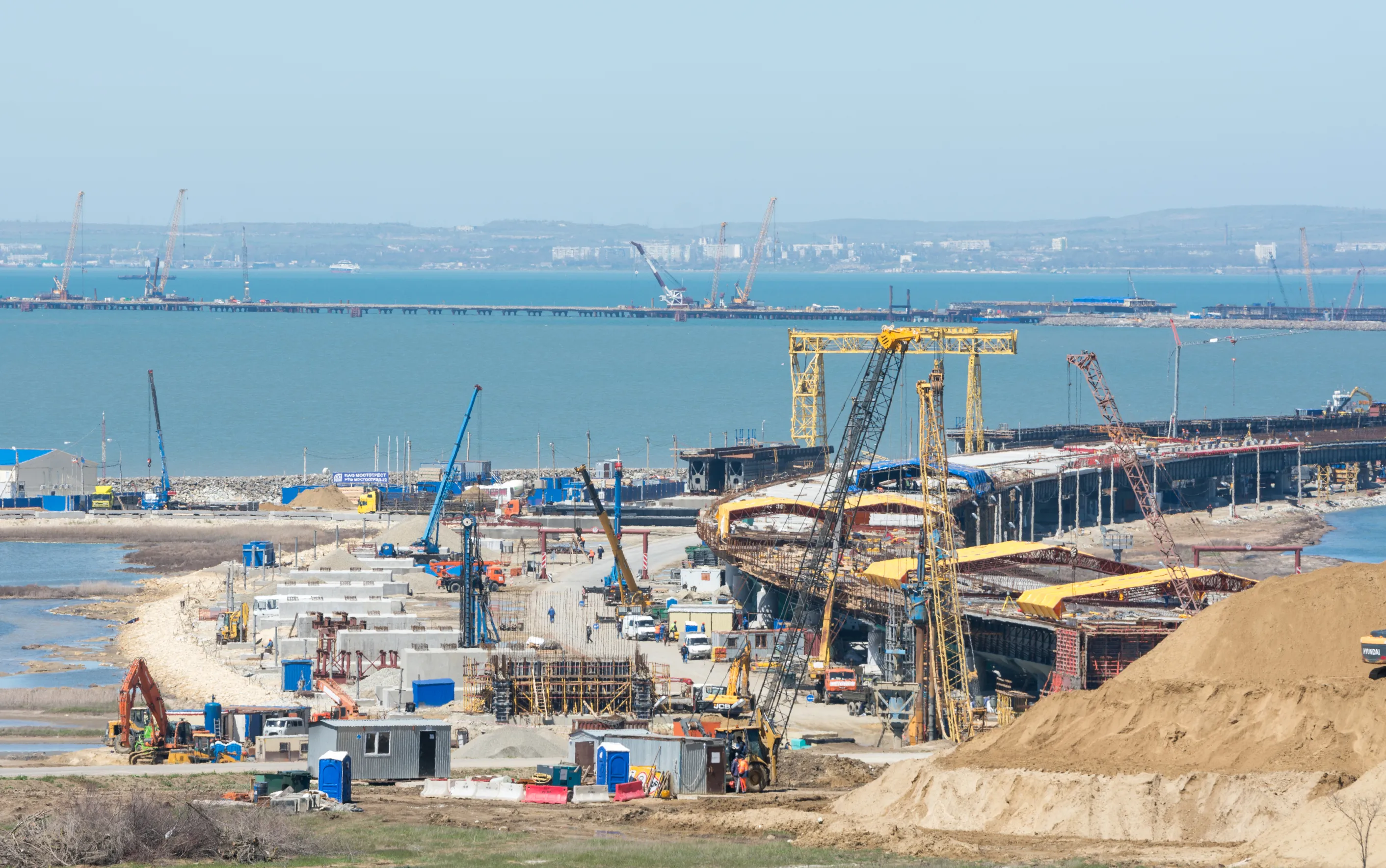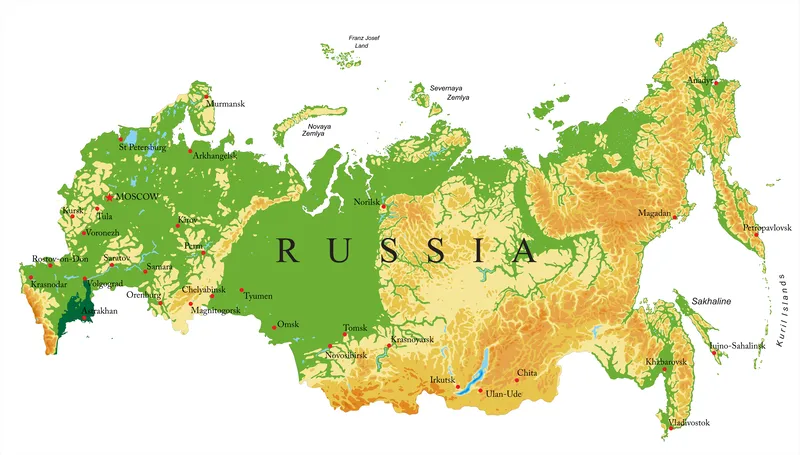
The Kerch Strait bridge spans the Black Sea, connecting Russia’s Taman Peninsula in Krasnodar with Crimea, the latter having been controversially annexed by Russia from Ukraine in 2014.
The official opening of the 19km-long bridge was carried out by Russia’s president, Vladimir Putin, who drove across the link in a Russian-manufactured
The crossing starts at the Taman Peninsula and includes a 5km section that runs along the top of an existing dam as far as Tuzla Island, reaching the Crimean Peninsula on the southern city of the side of Kerch. The various road links on either side of the bridge that connect with existing road networks have also yet to be fully completed. The new Kerch Strait Crossing forms part of the 237.5km-long Tavrida highway project, which should be fully completed by December 2020. The new highway will provide a direct road connection linking Kerch, Feodosia, Belogorsk, Simferopol, Bakhchysarai and Sevastopol. The highway section between Kerch and Sevastopol should be open to traffic by December 2018, while the project also includes building a number of connecting roads in the south of Russia’s Krasnodar Region.
When the bridge is finished, it is expected to handle around 40,000 vehicles/day, allowing the transport of goods. This will help boost the local economy in Crimea, which includes developing the area as a holiday destination for Russians.
The project has been headed by the SGM Group, which is owned by Arkady Rotenberg, one of Russia’s leading businessmen. However nearly 220 contractors in all have been involved in the project, with the workforce reaching 15,000 at its height. The design for the bridge was carried out by the Institute Giprostroymost-Saint-Petersburg, while the environmental impact assessment was carried out by STG-Eko.
The key sub-contractors included Karst, which drove the piles and constructed the supports; DSK, which has upgraded the access roads; and Voronezhstalmost, which supplied the steel components for the bridge. Institut Stroiproekt meanwhile has been responsible for the highway sections that link the bridge with the existing road network.
However there are some concerns as to how the bridge will cope over the long term, given the unstable geology, the thick layers of silt underwater and heavy winter ice as well as the potential risk posed by seismic activity. Concerns have also been expressed over the potential risk posed by vessels striking the supports as well as the effect of the structure on the environment, particularly, such as for tidal flow. The bridge builders say that the structure will be secure though, with the 7,000 piles on which it is built having been driven to depths varying from 50-94m. The builders used three different types of piles, with the twin bridges sitting on 46 supports along the 19km length of the project.
The bridge has twin steel arched sections measuring 227m-long for the road and rail links under which vessels pass. These sections were first assembled and then floated into position on barges, before being raised onto their supports.
There has been criticism of the structure from Ukraine in particular, which says that its maximum 35m height clearance above water does not allow sufficient space for larger vessels to pass underneath to reach its ports of Mariupol and Berdyansk. A height of 50m would have been suitable for these larger ships to reach these ports. The new bridge is understandably a sore point for Ukraine due to the ongoing political tensions it has with Russia and the opening of the structure has been criticised by several other countries including Canada, France, Poland and the US.
Russia and Ukraine had previously agreed to build a bridge over the Kerch Strait. But this agreement was annulled when Russia and Ukraine entered hostilities over the disputed Crimea territory. Russia then opted to push ahead with the project on its own, fast-tracking the design and construction process. The link was necessary to improve the connection transport for Crimea, which had been forced to rely on ferry services with Russia’s Krasnodar Region following the annexation.
This is not the first bridge across the Kerch Strait as a 4.5km rail link was erected in 1944 during WWII at a narrower crossing point. However, this bridge only lasted for a short period before falling victim to the tough winter ice conditions and the structure was demolished in 1945. And the idea of a bridge link across the Kerch Strait goes back at least as far as the 19th century. But it was not until 2014 that planning began in earnest for the current structure, with the contract being awarded to SGM in early 2015.






